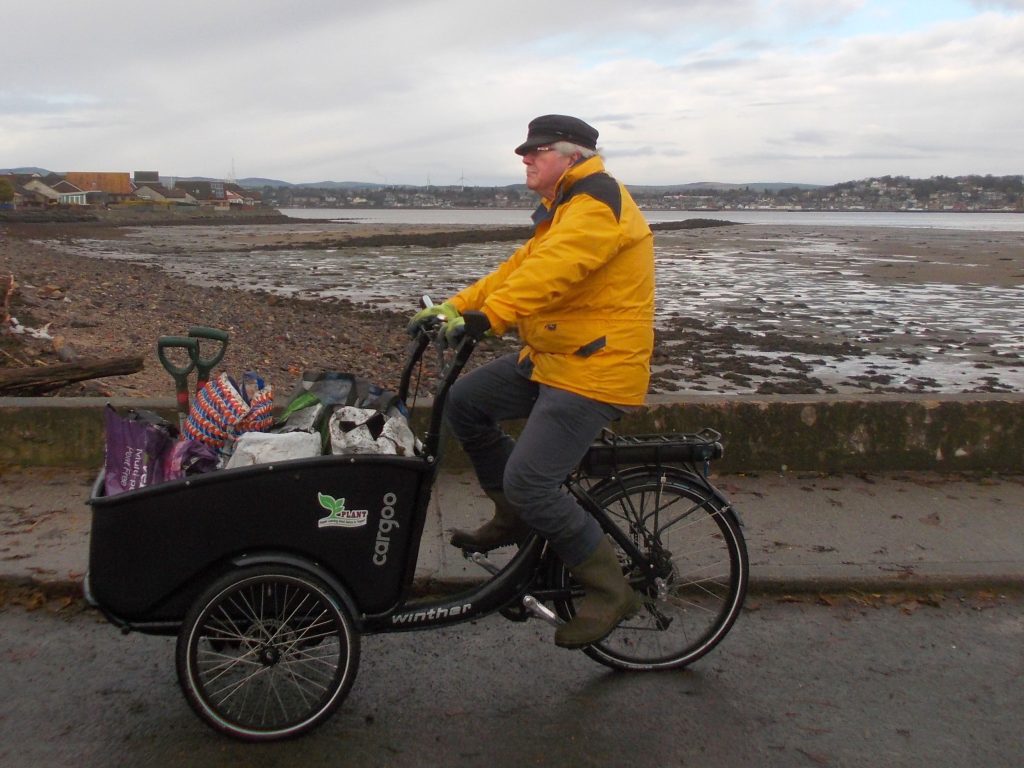How to improve soil using seaweed

In Tayport, on the north Fife coast, gardeners have made use of seaweed as a soil improver for generations. Today PLANT volunteers carry on the tradition by collecting seaweed washed up on the shore and taking it to the Community Garden.
The high tides and gales in November washed up a new supply of seaweed. In early December Mark, Jan and Janice from PLANT headed to the shore and filled bags with seaweed from along the shoreline. The bags were then taken over to the garden in the PLANT’s cargo bike – the PLANT mobile! Using seaweed to improve soil is free and has no carbon footprint, making it a win-win technique!
Mark explains the task: “We got past the place where ground underneath the path had been washed away and there was a gaping gash in the path itself. But soon after that, the path was impassable because of the mounds of seaweed heaped up on it. We began to fill our bags.
We made four return journeys in the cargo biketo transfer it to the garden and the job was done. At least, the gathering and moving part was! The next task is spreading it lovingly as a blanket over the bare earth of our garden beds. This will keep them from the cold of winter. The seaweed slowly releases nutrients into the beds that will feed the new season’s crops.”

benefits of using seaweed
Seaweed is relatively rich in potassium. It contains up to ten times more minerals than land -based plants. A thick layer acts as a soil protector over the winter. As the seaweed breaks down, it improves soil texture and nutrient levels. It also encourages soil micro-organism activity and acts as a growth stimulant.
You can apply seaweed directly on top of raised beds and borders. If you want to give this a go, make sure you only collect dead seaweed that has been washed up. Leave some on the beach as it is an important habitat for small invertebrates.
If you can, collect seaweed in a variety of colours. They will contain a wider range of nutrients. If there has not been much rain before you collect the seaweed you can remove some of the salt by washing in a trug before you use it. Some gardeners also recommend chopping it up first to help it break down more quickly. If you don’t have beds you want to put seaweed on, you can add it to your compost bin or use it as a top dressing on pots.
PLANT’s Community Garden in Tayport is very productive. Seaweed plays a part in helping PLANT to garden sustainably and produce bumper harvests every year.
Dr Gillian Fyfe, Climate Action Fife Development Worker – Climate Friendly Gardens, PLANT












